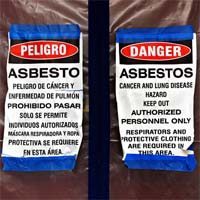Asbestos Type Influences Mesothelioma Development

A new report from South Korea shows that the type of asbestos exposure can influence the development of mesothelioma.
Asbestos is a naturally occurring mineral that has been found throughout the world. It was once called the “magic mineral” because of its seemingly magical properties.
All these properties pale in comparison to the fact that asbestos is toxic and causes cancer in humans. Asbestos causes mesothelioma and other asbestos-related diseases.
Asbestos is classified as a Class I Carcinogen by the International Agency for Research on Cancer (IARC). Sixty countries have bans on asbestos, but many developing countries still use this toxic material.
South Korea, where this study took place, was a major consumer of asbestos in the late 1900s. It was mostly used in building materials like insulation. The country passed the Asbestos Injury Relief Act in 2011 to provide compensation to people made ill by exposure to asbestos.
Asbestos and Mesothelioma
Mesothelioma is caused by asbestos exposure. It often takes a long time for mesothelioma symptoms to appear after exposure, sometimes up to forty or fifty years.
Asbestos is made up of billions of needle-like fibers. These fibers are so small that they are microscopic, and millions can fit on the head of a pin.
Because they are so sharp and small, they become embedded in different areas of the body. Somehow, they are either trapped or moved to the mesothelial layers of the body. This is the thin layer of lubricating tissue that surrounds most of the body’s organs.
There, it is believed, they create chronic inflammation. Over time, this inflammation may lead to mesothelioma in some people.
Asbestos Exposure Patterns
This study looked at almost 2,000 mesothelioma and asbestos-related lung cancer patients.
The time from exposure to having symptoms is called the latency period. For mesothelioma patients in this study, the latency period was about 34 years.
People who had worked in the production of asbestos-containing products or in asbestos factories had latency periods of about 33 years.
People who lived near asbestos mines and factories had longer latency periods of almost 36 years.
The study found that people who smoked usually had a shorter latency period.
Studies that look into asbestos exposure patterns, like this one, can help agencies and governments to develop better responses to asbestos-related diseases like mesothelioma.
Source
Huh, Da-An, Woo-Ri Chae, Yun-Hee Choi, Min-Sung Kang, Yong-Jin Lee, and Kyong-Whan Moon. “Disease Latency according to Asbestos Exposure Characteristics among Malignant Mesothelioma and Asbestos-Related Lung Cancer Cases in South Korea.” International Journal of Environmental Research and Public Health 19, no. 23 (2022): 15934.





